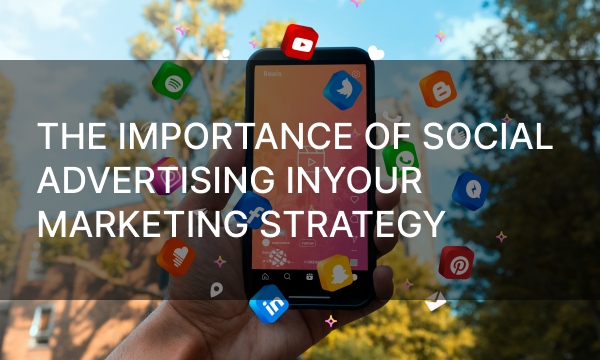Setting up and maintaining a marketing campaign can often prove to be a difficult and burdensome task, especially if you’re not very experienced in the field. It’s important to watch out for market changes, customer needs, current trends, what works and what doesn’t. Aside from that, a marketing campaign itself requires thorough setup and constant management in order to stay up-to-date and run most efficiently.
As a specialised platform for your advertising journey, Google Ads offers a plethora of tools that help analyze and maintain your ad campaigns and enhance their performance. However sometimes it is necessary to get your own hands on things to see if they will work. And one way you can test out your changes in an ad campaign would be by running experiments — several similar campaigns grouped by a specific difference – and watching their performance to gather real and practical data. The most dynamic and clear results come from Demand Gen Experiments.
About Demand Gen Campaigns
Before getting into Demand Gen Experiments, let’s overview what Demand Gen Campaigns are and how they differ from other types of marketing campaigns.
In short, Demand Gen campaigns are a type of a marketing campaign that can be created in Google Ads with the primary purpose to gain advertising engagement through visual multi-formatted ads, for example, across YouTube or other Google video partners. This type of an ad campaign is best suited for immersive, visual and highly engaging advertising that drives higher demand in a more creative and compelling way.
Demand Gen campaigns have proven over time through Google Ads statistics to be more noticeable and captivating and driving potential customers to be more willing to purchase the advertised product even if they had no interest in doing so before they saw the ad.
What Are Demand Gen Experiments?
Now that you’ve learnt about Demand Gen campaigns and decided whether you want to adopt them for your needs and abilities, it’s time to figure out Demand Gen experiments.
In a way, Demand Gen experiments are similar to campaign drafts, for they grant you the ability to propose changes to your advertising campaigns en masse. What sets Demand Gen experiments apart is letting you test out those changes at the minimum cost and effort applied.
Your Demand Gen experiment is essentially a group of one or more clone campaigns with different settings that run alongside your original marketing campaign and have their end performances compared and analyzed in order to isolate those settings that work best for your advertising strategy.
Here are a few reasons why you should consider trying out experiments while reviewing your campaign performance to decide what changes to make to improve your marketing journey:
- Experiments let you test out changes real-time and directly compare them to your original settings and the overall performance;
- You can duplicate the settings of your clone-campaign and apply to your original campaign, if any of them end up performing better than the rest;
- Using experiments allows you to create several test campaigns to be able to monitor the performance of many possible variations at the same time;
- If you’re unsure what settings of your advertising campaign aren’t doing that well, you can use recommendation cards and Google Ads campaign tips to create clone-campaigns with a similar setup to test something new.
That being said, Demand Gen experiments are a good way of running long-term tests on your campaigns and picking out the preferred variables.
Prepare And Set Up The Experiments
Before you run your Demand Gen experiment, remember a few things:
- Experiments only work within Demand Gen campaigns, other types of Google Ads campaigns can’t be used in experimental ways;
- In order to run an experiment, you need a minimum of 2 Demand Gen campaigns that have all their settings ready, but are not running at the time. More than two Demand Gen campaigns can be used if necessary;
- Make all the necessary changes to campaign setups before you save and start the experiment;
- Lay out your Demand Gen campaigns with a difference in only one setting at a time to be able to see and draw clear conclusions depending on your experiment results. Experimenting on campaigns that differ in many settings will cloud your experiment results and you will most likely have to start over or end up with inconclusive or even false results;
- It is recommended that you create your test Demand Gen campaigns with the same start date for your experiment to be more precise, otherwise your campaigns’ performances may be influenced by different outside factors, like changing trends or customer mood fluctuations, which will make your results inconclusive;
- Experiments are best suitable for testing audience and product feed and creatives. Running tests on bidding or budget does not give definitive results for experimental Demand Gen campaigns.
Remember to create all of your Demand Gen campaigns before setting up your experiment. During the setup, make sure to name your experiment according to its goals and give it a concise description for future reference. In the Traffic split section input the desired percentage by which you want to split. It is recommended you use an even percentage between your original and your clone campaigns to get the most accurate comparison results. Finally, to be able to properly measure your end results, choose your metric: conversion rate, cost-per-conversion, cost-per-click or clickthrough rate. With such little setup, your experiment is ready to run. Now all you need to do is occasionally check on its performance in the reports menu.
Evaluation Of Results
You can start analyzing your results and comparing campaign performances while your Demand Gen experiment is still running and, if you find the results clear and fulfilling, you can end your test run prematurely.
In order to view all of your gathered data, see your experiment report. There you can find three informational components to rely on:
- Confidence level dropdown. Choose the depth of results by which you want to filter your gathered data. Confidence of 70% is selected by default and will provide the quickest results, but they will be rather surface-level. In comparison, 80% will show you a balance of speed and depth of results. At last, 95% confidence will give you the most conclusive report with high certainty of results. This selection will affect other components as well;
- Top card. This informational component contains gathered data based on the metric you chose for your Demand Gen experiment. Your top card can have one of three statuses, which are fairly self-explanatory: if your top card status shows Collecting data, your experiment still needs some time to calculate more definitive results. Try viewing this info component at a later time. If your top card status reads as Similar performance, there has been no significant difference between your original and clone campaign at the time. You can wait for longer to see if over time this performance will change. And finally, if your top card status states that one arm (experimental group) is performing better, you have found your experimental winner. This means that one of your campaigns — original or a clone – has settings far more successful than the others. See more info on it to find out what exactly did better;
- Reporting table. This report component has more descriptive information on how everything has been running. This part of your experiment report is the most important, because you are able to view all the details of your experiment and how it went — information like the original (control) group, experimental group, status performance and all available metrics.
Use all of the information that the experiment report provides you with to evaluate the various settings you’ve been applying to clone campaigns. Running experiments, tests and comparison is an important and simple way of gathering data that will allow you to improve your marketing strategies. Ensure that you put consistent effort into thoroughly analyzing the results each time you run testing.
Tips For Working With Demand Gen Experiments
Bellow are some tips to keep in mind when working with Demand Gen experiments and overall testing changes on your advertising campaigns:
- Remember about your past results. All campaigns that you run, successful or not, are a valuable experience for you nonetheless. If you find out during your marketing journey that some things work better than others , make sure to apply that knowledge to your future ad campaigns;
- Prefer only one different variable in your clone campaigns. Again, this is highly recommended. If your clone campaigns differ in many aspects, it will be difficult to determine which of those aspects makes the biggest impact on the performance of your campaigns;
- Don’t hesitate to pause your experiment halfway. If you’re running several groups of clone campaigns with similar settings and they show significant difference in results before your experiment is over, perhaps it would make more sense to pause those groups of clone campaigns and shift their budget into the ones that show high results;
- Inconclusive results are also important. An experiment that didn’t hold any definitive information most likely shows that the variable you picked to test out isn’t substantial enough. Try a new experiment, but this time test another part of your marketing campaign to see if it has more impact on the overall performance.
In Conclusion
In summary, Demand Gen experiments are an effective way to test changes to your advertising campaign. They allow you to directly compare the new settings to your original setup and assess their impact on overall performance. Demand Gen experiments let you run clone campaigns in parallel to your current one and pick out the best setups based on the end goal and the results you receive upon finishing your experiment.
Keep an eye on your results and don’t be discouraged if they don’t meet your expectations right away. Experimenting and trying new approaches are crucial for creating successful and impactful advertising campaigns. Demand Gen experiments help you refine and compare your ideas, ensuring your campaigns stay relevant and effective.



